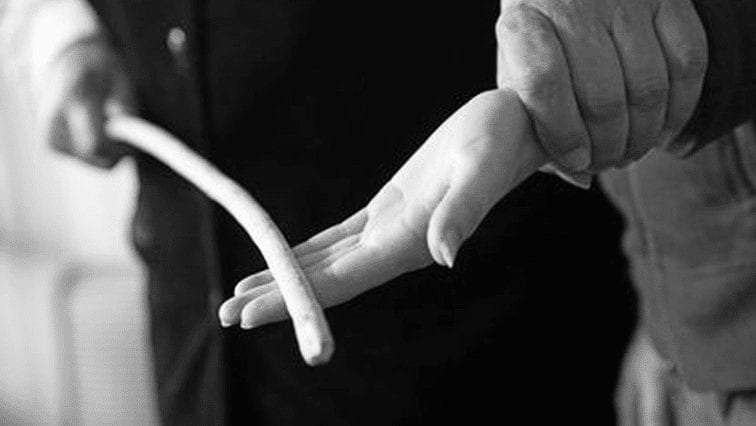SEE ALSO: 10 Insanely Common Misconceptions About Psychopaths There is a quirky side to all of this. For some reason, they do not fall prey to contagious yawning and often perform heroic acts. However, even when they make sacrifices for the greater good of others psychopaths can get really creepy.
10 The Difference Between Psychopaths And Sociopaths
The two disorders confuse even professionals. Psychiatrists, police officers and criminologists often use the terms incorrectly as synonyms. To be fair, neither respects the law, social rules nor human rights. Remorse and guilt are absent. The penchant for aggression is strong. This overlap keeps most people in the dark about what sets them apart. Curiously, their unique traits are polar opposites. Sociopaths tend to be nervous and emotionally volatile. Psychopaths are slow to agitate, charming and calm. The latter is more likely to succeed within society while sociopaths have a higher risk of being uneducated, isolated or struggling to keep a job. Sociopaths are clearly “disturbed” while psychopaths appear normal. Sociopaths suck at relationships but they form a few meaningful bonds, something psychopaths is inherently incapable of. A meticulously planned crime indicates a psychopath while sociopaths are more prone to spontaneous murders. Finally, psychopathy is believed to result from a brain defect. There is strong evidence that sociopathy is caused by severe trauma, especially in childhood. Which person is considered to be the more dangerous one? The psychopath. In fact, theirs is viewed as the most lethal of all personality disorders.[1]
9 The Most Psychopathic Place In America
In 2018, researchers wanted to plant a flag in the most psychopathic spot in the United States. The study did not gather details about violent acts. Instead, it drew on previous research to find the highest concentration of psychopathic personality traits. The scientists admitted that it only allowed them to develop their own rough methodology to crunch numbers from all over the US. That being said, the technique did provide a good idea of where the Dark Side roamed. While most people might suspect New York as the likeliest place to take first prize, the most psychopathic state per capita turned out to be Connecticut. New York was tied in fourth position with Wyoming, after California and New Jersey. For those who are interested, the most benevolent states were West Virginia, Vermont, Tennessee, North Carolina, and New Mexico. Although Connecticut won the state statistics, it was not the most psychopathic place in the region. When the federal district of Washington DC was included in the study, it received a psychopath score of 3.48 – nearly double the Connecticut score. The fact that the US capital homes the most psychopaths did not come as a surprise to some. There is a long-standing notion that such individuals are drawn to the power of a political environment.[2]
8 The Workplace Psychopath
The majority of psychopaths lead normal lives. They have families and jobs. Business leadership positions are notoriously occupied by psychopaths. Their charisma build professional networks and as skilled manipulators they can convince people to invest or believe in their product. Despite the normalcy with clients, their toxic nature often surfaces in the workplace. A dark colleague often harms other workers but not always in the physical sense. Most office psychos shred their co-workers’ nerves, confidence, and even their careers. Working with psychopaths can be soul-destroying, but switching jobs is not always an option. To cope, experts suggest an understanding of how psychopaths gain control over a person. They manipulate emotions, use intimidation, tell sob stories and use direct contact. In that order, you can play it cool, never show signs of intimidation nor engage with tall tales about how somebody wronged them. Finally, if possible, limit contact to online communication. This limits their manipulation and bullying because the interaction is indirect and proof of their behavior can be recorded.[3]
7 Psychopaths In Love
Cupid does not discriminate. Sometimes, the cherub’s arrows plonk into psychopaths. Predictably, their relationships are not normal. Depending on the severity of their condition, psychopaths view their lover as a tool, possession or someone who validates their personality because they share similar views. True affection is rarely present. Inevitably, some relationships turn toxic and deadly. In 2015, a study examined the subtle side of psychotic love. About 140 couples were tracked for a year to understand how attachment and psychopathy changed over time. A few questionnaires later and the participants had their spectrum score, as well as an attachment rating. The latter focused on things like fear of abandonment and the inability to bond. The tests were repeated at a later period to note any changes in the relationship. The first test identified the participants with primary psychopathic traits, such as insensitivity. In this group, men showed more attachment difficulties by the second test but not the women. Both genders with secondary traits, such as antisocial behavior, had more bonding difficulties over time. Overall, the prognosis was unhealthy. Negative emotions and behaviors tend to spiral until the normal partner is in a really bad place or the relationship is destroyed.[4]
6 Night Owls’ Evolutionary Dark Side
People who prefer the late hours of the night are referred to as “night owls.” The choice might not be entirely their own. Many studies support the notion that certain individuals are wired by nature to be nocturnal. They feel more energetic, focused and creative at night. A recent survey found a darker trait. Things tend to go south when somebody has narcissism, psychopathy or Machiavellianism, but the results showed that night owls might have all three – in the same person. Psychologists call this the “Dark Triad.” Interestingly, researchers feel that an evolutionary battle is raging between the “cheaters,” who essentially break social rules for self-gain, and those trying to curb their behavior. For this reason, it is plausible that people with a DT personality evolved into night owls because they have the advantage when the sun goes down. Not everyone with these traits turns into criminals, risk-takers or cheaters. However, most offenders have DT to some degree and for them, the darkness is a great playground. There are fewer people around to judge or catch them in the act. In modern times, there is nothing good about stealing someone’s wallet or their spouse. But in evolutionary terms, this behavior brings reproductive and survival perks.[5]
5 The Link Between Heroes And Psychopaths
In a difficult world, heroic individuals are often the ones who give us hope. In 2005, a normal businessman rescued almost 20 people from the tsunami that devastated Thailand. The welcome he received when he returned home to Australia was a pair of handcuffs. Despite his actions in Thailand, he had committed burglary and assault on his home turf. History is full of hero-offender chameleons. It was only a matter of time before researchers lured volunteers closer for an experiment. In this case, the team wanted to pin down any links between psychopathy and heroism. This seemed nuts. Heroism is defined as “altruistic behavior involving some risk.” Unlike psychopathy, altruism is a healthy empathetic trait. However, considering that personality is a spectrum, good people can stand with a few toes in the shadows. In other words, you are not the town killer but dark traits are present. The 2013 study looked at three groups. The first consisted of 243 undergraduates, another captured answers from 457 people online and the last analyzed 42 US presidents, ending with George W. Bush. The participants of the first two studies were questioned about the heroic acts they have performed in the past. Any good deed was acceptable, even something as mundane as helping a stranger with car trouble. Naturally, everyone was also assessed for psychopathic tendencies. Nobody was a straight-up psychopath. However, the results showed that those with darker toes reported more heroic acts (the study made a good effort to weed out the self-aggrandizing liars beforehand). At the end of the day, it suggested that people with empathy, boosted by a subtle psychopathic trait or two, were more likely to get involved and save the moment. But what about the presidents? They were also rated to determine where they stood on the spectrum. Interestingly, the more psychopathic ones were also war heroes.[6]
4 An Immunity To Contagious Yawning
When a sleepy person yawns, chances are that somebody nearby will catch the urge to do so as well. Despite that there is no explanation for this, experts have long nourished a plausible theory. In a nutshell, if you yawn like a donkey because somebody close to you did it, then you are more empathic. Supposedly, contagious yawning between friends and family show strong emotional ties with the original yawner. When a stranger gets snoozy in public, the people who are triggered by it are believed to have deeper emotional connections with society. By that reasoning, a psychopath should be immune. In 2015, researchers gathered volunteers. The idea was to test whether psychopathy’s main trademark, a lack of empathy, would shield the darker souls from catching a yawn. The participants were tested to find their place on the psychopathic spectrum. Afterward, they were ushered into a dark room. Once inside, they watched clips of blank faces, smiles and yawning. The participants’ own faces were wired to electrodes to record how many times they yawned and how often. Those who lacked empathy yawned back the least. This does not necessarily mean that every person who is immune to group yawns is a blade-wielding butcher. Or even on the psychopathic spectrum. However, it remains an interesting discovery about a complicated personality disorder.[7]
3 A Different Danger – Girl Psychos
Throw the word “psychopath” into a conversation and almost everyone would think the person is male. Even research indicates that fewer women have psychopathy. Unfortunately, this is one time when statistics cannot be taken at face value. Scientists know that female psychopaths come with a special danger – their numbers are not lower because psychopathy prefers the Y-Chromosome. The girls are harder to spot. While they are as superficially charming, manipulative and violent as their male counterparts, women have behavioral differences that double as camouflage. They are less likely to engage in the physical altercations that might expose them, and can also mimic emotions like fear, vulnerability, and love. A brain study from Harvard supports the idea of a larger female psychopath population. It looked at two groups; those with the darker personality traits and those without. After discovering clear physical differences between the two, the study concluded that psychopaths are born and not made. Since it suggested the disorder resulted as a case of “nature” and not “nurture,” it could mean that psychopathy is equally distributed between the sexes. As limited as research may be on the female side, there are signs to look out for. They can be jealous, deceitful, controlling and manipulative. Their nature also tends to show for the first time during their teenage years.[8]
2 They Do Not Understand Punishment
Without prejudice, the best location to visit when looking for psychopaths for your study is a prison. In 2015, inmates diagnosed with psychopathy were given MRI scans. A second set of prisoners, this time without the condition, also had images taken of their brains. All the prisoners were from the United Kingdom and had been convicted of violent crimes such as rape, murder, and grievous assault. The third group, healthy civilians with no criminal records, was also treated to an MRI. During the scan, each “patient” played a game inside the machine. Based on rewards and punishment, the researchers were particularly interested to see how the psychopathic inmates would adjust their behavior when faced with positive and negative results. Even better, if that behavior could be captured by the scans. The images did show abnormalities in the region involved in punishment. Since the neural glitches were absent from the non-psychotic inmates and the civilians, this suggested that psychopaths do not process punishment in the same way as everyone else. The discovery backed up the fact that rehabilitation programs have success with violent criminals who are not psychopathic but not with those who are. That was not the only thing wrong with the psychopathic group’s brains. The MRI also found reduced gray matter in the areas linked to moral reasoning, empathy, and social emotions like guilt. Additionally, faulty fibers connected to the prefrontal cortex where the brain learns from punishment and rewards. This could explain why affected individuals only see the positive outcome of what they desire while ignoring the threat of negative consequences. For example, to kill someone might serve a psychopath in some way. While normal people experience the urge to throttle an enemy, they never do it because they understand the consequences. They want to avoid going to prison or dying in the altercation. It would appear that psychopathic offenders cannot – or will not – admit that consequences apply to them.[9]
1 Helpful Psychopaths Are Still Scary
In 2017, scientists sought the answer to a harrowing question. How willing would someone be to sacrifice a life in order to save others? Feelings removed, logic dictates that a group should not die for an individual. However, humans are emotional and empathetic beings. A single life is a life, after all. But sometimes, a difficult choice must be made. The research team gathered 40 volunteers. During the assessment that determined their psychopathic traits, each volunteer had to complete several questionnaires, including the HEXACO Personality Inventory and the Levenson Self-Report Psychopathy Scale. Afterward, the scientists had a good idea of which participants batted for the Dark Side. The volunteers then faced an ethical dilemma presented in two forms. On the one hand, they dealt with a difficult situation in the form of another questionnaire. But during the second scenario, they had to act out their choice. What were the moral struggles? A team member is going to be captured and tortured by the enemy. Would you kill this person to spare them that fate? Another involved strangers. There is an out-of-control train heading for five people. Next to you is one person. If you shoved this person in front of the train, the other five will live. Can you do it? To make it more real and thus elicit a more authentic response, the scientists used virtual reality and a robotic system. The tools provided a realistic feel for stabbing or pushing someone. Some of the volunteers with high psychopathic ratings chose to do the “right” thing. The results were disturbing. When they performed a mercy killing to save their team member from torture, they stabbed him with more force than was necessary. When they rescued the five strangers, they also pushed the person in front of the train with a little too much enthusiasm.[10] Read More: Facebook Smashwords HubPages
























